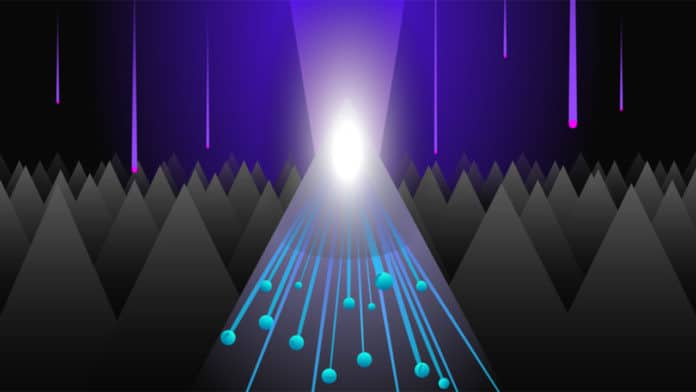At present, ultraviolet sensors are utilized in numerous fields ranging from various spectroscopy applications via biotechnical innovations to industrial process control. Despite this, the performance of current UV sensors is surprisingly poor.
Now, researchers have developed a photovoltaic device that has achieved an external quantum efficiency (EQE) of more than 130%. This record high performance was obtained using a nanostructured black silicon photodiode with the self-induced junction. This major breakthrough can readily have a significant impact on the photodetectors and UV-sensor industry.
The 100% limit has so far been considered as the theoretical maximum for external quantum efficiency, which means one incoming photon generates one electron to the external circuit and is harvested as electricity. And the efficiency of 130% means that approximately 1.3 electrons are obtained from each photon in the external circuit.
The researchers found that the secret of high external quantum efficiency is based on the effective utilization of multiple carrier generation process triggered by high-energy photons, which takes place inside black silicon nanostructures. The phenomenon has not been observed experimentally in the past, since the presence of electrical and optical losses has reduced the number of collected electrons.
Black silicon can absorb photons and release electrons in a much better manner as it forms billions of small, nano-scale pits during the process. Also its cone and column nanostructures reduce electron recombination at the surface of the material. All these advances of the black silicon helped the photovoltaic device to achieve the external quantum efficiency of above 130% in the UV range without external amplification.
“We can collect all multiplicated charge carriers without a need for separate external biasing as our nanostructured device is free of recombination and reflection losses,” explains Prof. Hele Savin, head of the Electron Physics research group at Aalto University.
The team also had these significant results verified independently by the German National Metrology Institute, Physikalisch-Technische Bundesanstalt (PTB), which is known to provide the most accurate and reliable measurement services in Europe.
In practice, according to the researchers, this record efficiency can help improve the performance of any device that is utilizing light detection. Light detection is already used widely in our everyday life, for example, in cars, mobile phones, smartwatches, and medical devices.
“Our photodetectors are gaining a lot of attraction at the moment, especially in biotechnology and industrial process monitoring,” says Dr. Mikko Juntunen, CEO of Aalto University spin-off company, Elfys Inc. They are already manufacturing the record detectors for commercial use.
